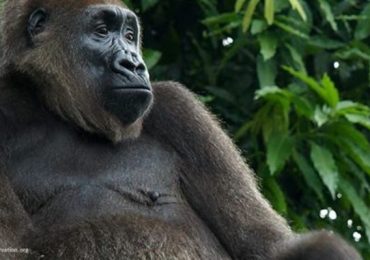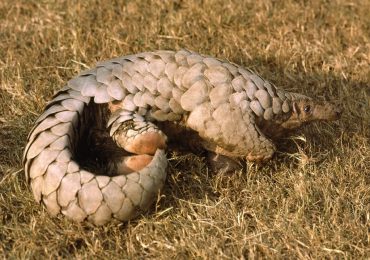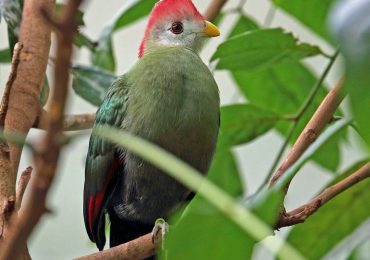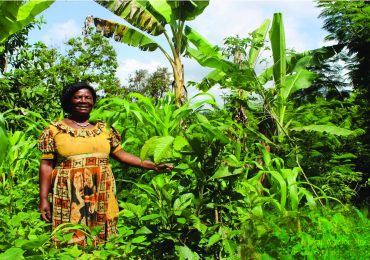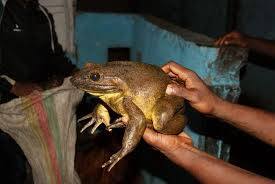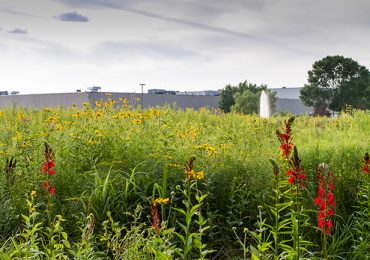The Adamawa Plateau named after Modibbo Adama, the founder of a Fulani emirate, is 1100m in altitude made up of tree and bush savannah vegetation. There are also clearly defined mountains with summits over 1800m, the most elevated being occupied by the grassland vegetation Sporobolus africanus much grazed by herds of the Mbororo. It’s highest elevation reaching over 2650meters. The vegetation of Adamawa Plateau is made mostly of savannah and some part of montane forest. The plateau is the source of almost all water basins in the country, such as the Benue River, River Sanaga, Logone River, Djerem, and the Lom river. This plateau has key biodiversity hotspot such as Tchabal Mbabo, Tchabal Mbabo Mountain range on the western border of the Adamoua Plateau is the highest peak on Adamawa Plateau.
The Tchabal Mbabo Mountains represent the last segment in the chain of mountains known as the Cameroon Volcanic Line, which extends northeasterly from the island of Bioko continuing inland with Mt. Cameroon, Mt. Kupe, the Manengouba Mtns, Mt. Lefo and Mt. Oku. Tchabal Mbabo is a broad horseshoe-shaped mountain massif with a west-eastern orientation and altitudes of up to 2,400 m. Above 1,600 m covers 79,000 ha with 4,900 ha of relict montane forest along the steep northern slopes, adjacent to the rim which represents the northernmost occurrence of this forest type in Cameroon. The vegetation of Adamawa Plateau is made mostly of tree and bush savannah and part of montane forest. The montane ecosystem is the most botanically rare and the most interesting ecosystem on the Tchabal Mbabo Mountains.
A survey by Matt Walters University of Canterbury, NZ 2004 identified ten IUCN globally threatened montane plant species on Tchabal Mbabo, Locally these forests are crucial for maintaining a year round water supply for local communities and are the headwaters of several major rivers. They are also habitat for wildlife. The montane-savannah ecosystems of Tchabal Mbabo are globally recognized for their conservation importance due to their richness in birds (Tchabal Mbabo was designated by Birdlife International as an Important Bird Area (IBA) harboring more than 86 species of birds including six species of endemic to montane areas of western Cameroon and Nigeria), reptiles, amphibians and large mammals.
The mammalian species include large predators such as the threatened golden cat Felis aurata, leopard Panthera pardus and spotted hyena Crocuta crocuta. Following biological reconnaissance surveys conducted by a team of CWCS scientists, the African wild dog Lycaon pictus reported extinct in the area by IUCN was recently confirmed by local hunters to still be present. However, a total of 30 herpetological species (one caecilian, 14 anurans, nine lizard and six snake species) are recorded from the Tchabal Mbabo Mountains. In this light, from thoroughly surveyed savanna/forest areas in West Africa suggest amphibian species counts of at least twice of those present here. Efforts to preserve the unique montane forests on the northern slopes as well as the semi-deciduous and gallery forests are warranted to ensure their welfare in the future.
The montane forests on the north-facing slopes are relatively secure due to their extreme topography. The gallery forests on the southern slopes however, are accessible to the Fulani cattle and are increasingly degraded by husbandry practices. Threats to the vegetation of Tchabal Mbabo come from the local Fulbe in terms of overgrazing by cattle, burning and wood collection. Particular species which are exploited include the timber tree Hallea stipulosa, and Prunus africana. The latter is commercially valuable for its medicinal purposes as the bark contains a complex of compounds used in the treatment of prostate cancer. Trees are completely stripped of bark and consequently die. Though rich in biodiversity, no conservation work has been carried out in Tchabal Mbabo.
Recommendations for conservation and management support the idea of creating a National Park incorporating the whole of Tchabal Mbabo with different management zones:
1) Total protection of the forest that is escarpment forests and some areas of the plateau with representative types of stream fringing forests
2) Rural development on the plateau with the introduction of alternative grazing and wood Sources or reintroduce floristic diversity. Eucalyptus species have proved very effective on neighboring Mambilla Plateau in Nigeria, but fast growing native species such as Croton macrostachyus and Hallea stipulosa could be trialed.
3) Rural development on the Dodeo plain with a wide buffer zone between it and the bottom of the escarpment forests.
The award winning NGO, Environment and Rural Development Foundation(ERuDeF) with over 20yrs experience in conservation activities, restoration of fragile ecosystems, has planned to contribute to the conservation of Tchabal Mbabo Mountains in the Adamawa Plateau. The conservation activities will be geared towards conservation of the biodiversity through creation of protected area to secure the habitats of important biodiversity both fauna and flora, in addition, ERuDeF will carry out law enforcement to ensure the proper management of the protected area and also ensure livelihood to local community, sustainable finance and applied research in the management and conservation of this area. By doing so, ERuDeF would contribute to the sustainable conservation of Tchabal Mbabo to take it back to its glorious days.


